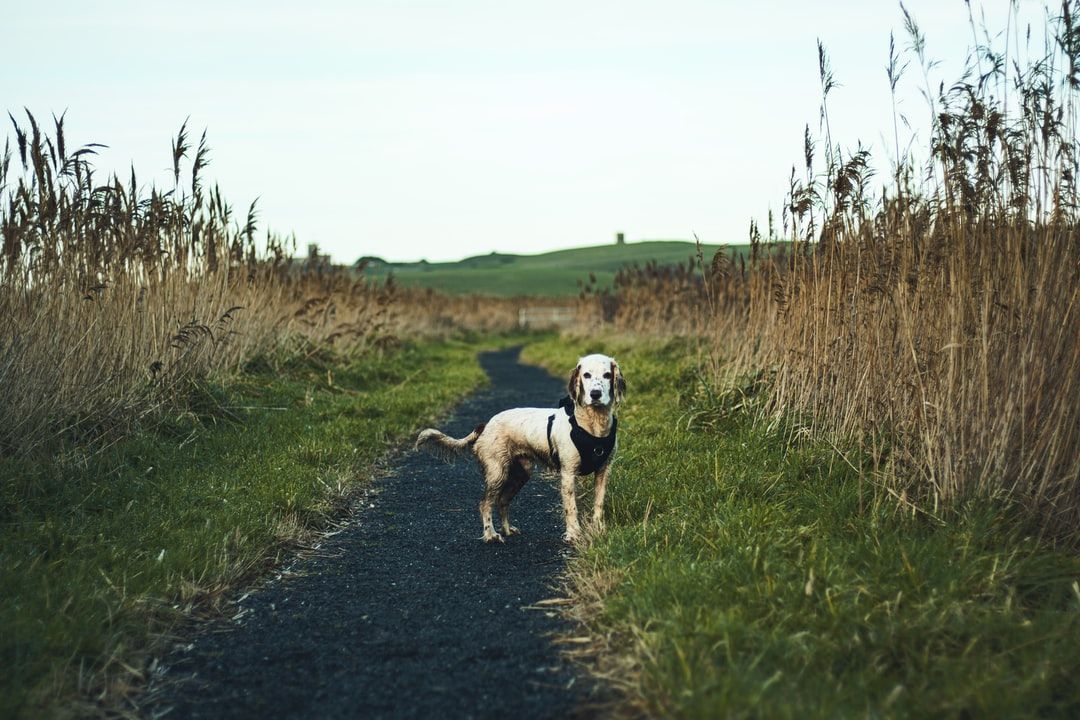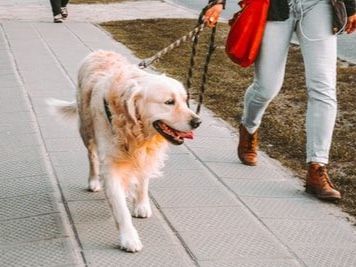You can spend your entire walk dreading off lead dogs and avoiding certain routes, in a desperate attempt to have a somewhat normal walk. Despite your efforts, you still find yourself in situations where your dog’s behaviour seems out of control.
Reactivity can result in stress, emotional exhaustion and even social isolation for both you and your dog. Its critical that you don’t give in to that feeling of helplessness because you do have the power to help your dog and if you are reading this, you have taken the first step.
"The most common way people give up their power is by thinking they don't have any"
(Alice Walker)
(Alice Walker)
In this blog we are going to discuss 4 ways you can help your reactive dog feel safe on walks. Learning coping strategies for your dog can be a real game changer and although it will take some effort and patience, I promise it will be worth it.
Breaks From Walks
When a break from walks are often suggested, dog guardians can just stare bewildered at the insanity, however, it is the best way to start addressing your dog’s reactivity. We know ourselves, that when we have had a stressful or traumatic experience, we need time to decompress and recover. However, if we were exposed to that experience on a daily basis, we would likely suffer with chronic stress and our health would gradually deteriorate.
The same can be said for your dog. Every time he experiences stress, cortisol is released and this can circulate for up to 72 hours, meaning your dog can become permanently stressed if he is regularly exposed to his triggers. Thus, a couple of days or even a week break from walks, can help your dog to decompress and recover, allowing him to be calmer on future walks. In the meantime, enrichment, treat puzzles and training games in the home and garden can keep your dog mentally stimulated.
Choice
Reactivity is not a choice, in fact it’s the behaviour that often results from a lack of choices. Therefore, giving our dog choice can help really empower them to be calm and more resilient in the most challenging situations. In most cases, reactive dogs wish to increase the distance between themselves and the trigger, so giving your dog the option to move away and walk in a different direction, can really help your dog feel safer.

Distance
When you have a reactive dog, the best coping strategy is distance. Each dog has a coping threshold, therefore, it’s important to determine what distance your dog can cope with and start from there. If you see dogs coming closer to you, do your very best to increase the distance to help your dog feel safer, even if this means changing your walking route or going back the way you came. Its not worth upsetting your dog to take your favourite walk, if you know they will be exposed to situations they cannot cope with.
Walking Equipment
Many reactive dogs will lunge, and if they are being walked on the collar, they will likely choke themselves. If your dog feels physically unbalanced, that will contribute to him feeling emotionally unbalanced. Wearing a harness that has a strap across the chest and shoulders or one that cuts under the armpits, can restrict your dog’s movement. Having your movement restricted, in a scary situation, can make you feel more vulnerable and this is how your dog can feel.
Hence, it is vital to ensure that they wear a comfortable Y fitted harness that allows free movement. It is also important to have a safe lead that keeps your dog close to you. If you use an extendable lead and you have to reel your dog towards you every time you see a dog, you are going to struggle to prevent reactive behaviour, because your dog is too far away to engage with you. Having a normal fabric lead helps to prevent any tension and ensures your dog is close to you, in order to gain his attention and quickly change direction.
To Conclude
Although there are a myriad of ways to help your reactive dog, these are some of the first steps towards introducing coping strategies. Implementing these strategies will move your dog to rely on you to keep him safe because you are acknowledging his fears and doing everything you can to manage his stressors. However, building your dog’s resilience doesn’t happen overnight and its critical to educate yourself and seek support to help your dog reach his true potential.
Start Your FREE Skill-Hub Trial Today
Commitment Free 3 Day Access
Canine Principles' Skill-Hub allows unlimited* access to ALL self-study courses, workshops & webinars.
*Requires Monthly Subscription. See Skill-Hub Subscription Page For Details.

